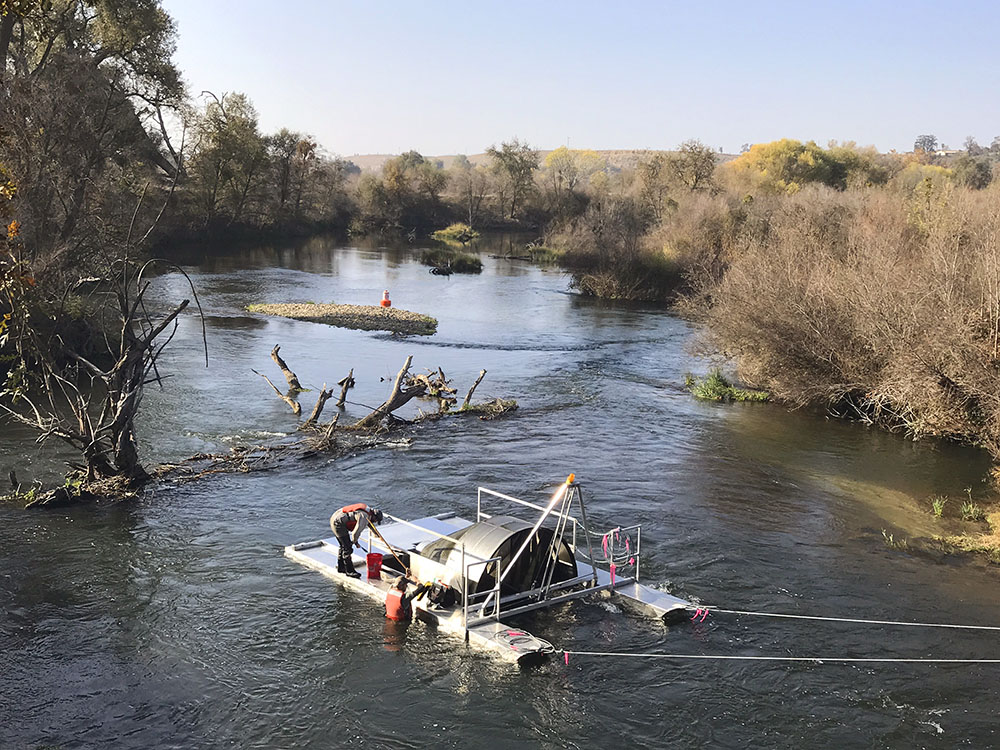- Reclamation
- News & Multimedia
- News Stories
- After 60 years, Chinook salmon spawn in San Joaquin River
After 60 years, Chinook salmon spawn in San Joaquin River
Written by: Josh Newcom

San Joaquin River Restoration Program staff check a rotary screw trap for newly emerged spring-run Chinook salmon - Photo by Josh NewcomSpring-run Chinook salmon have successfully spawned in the San Joaquin River for the first time in over 60 years due to a multiagency effort by the San Joaquin River Restoration Program.
The San Joaquin is a heavily altered river. An assortment of canals, diversion dams and other structures funnel water from the river to farms, cities and industry. While it was once home to the largest population of spring-run Chinook in the state, with the construction of Friant Dam in 1942, the prime spawning habitat for the spring-run was cutoff. The result, in combination with other factors, was the species disappearing from the river.
The Restoration Program, the outcome of an 18-year lawsuit and subsequent settlement, seeks to return the fish species to the river through a collection of actions. Understanding what spring-run Chinook need to survive is a key component to creating their successful return. Fishery biologists measure, weigh and take tiny genetic identification tissue samples from juvenile fish before being releasing them back to the river as part of a monitoring process. This genetic information helps Program biologists determine the parentage of each fish in the river. The value of this information is twofold: a better understanding of which fish have the genetics for the greatest chance of survival in the San Joaquin River ecosystem; and, the ability to track the fish back to a specific redd (or fish nest) in order to analyze which locations have the best survival rates and why.
The adult salmon - parents of the juveniles caught - were grown to adult size over the course of three-to-four years in tanks at the Salmon Conservation and Research Facility, located on the banks of the San Joaquin below Friant Dam. These full-grown fish were then released into the river and some successfully spawned, producing their offspring before dying. Though these adult salmon never migrated to the ocean or journeyed back upstream as natural salmon do, they still constructed 13 redds in the most upper reach of the river that were detected through observation.
In the coming months, program staff will conduct fish restoration activities, which include releasing additional spring-run Chinook juveniles to the river and monitoring the lower reaches of the restoration area for returning adult spring-run Chinook from previous year releases.
Implementing agencies responsible for management of the program are the Bureau of Reclamation, the U.S. Fish & Wildlife Service, the National Marine Fisheries Service, the California Department of Water Resources and the California Department of Fish & Wildlife. For more information about the Program, please visit www.restoresjr.net
Published on February 05, 2018

